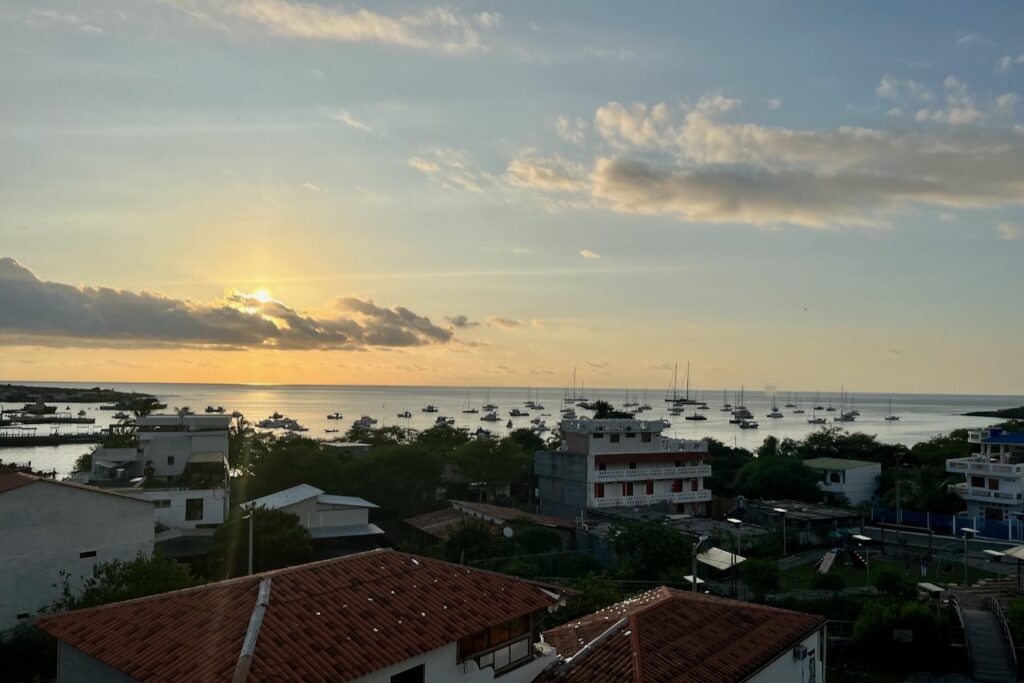We arrived to San Cristobal by a regular ferry boat from Santa Cruz. Before and after our liveaboard, which departed from here, we explored San Cristobal. The main port town is Puerto Baquerizo Moreno. It is the administrative capital of Galapagos, though with 6,000 people has less than half the population of Santa Cruz.
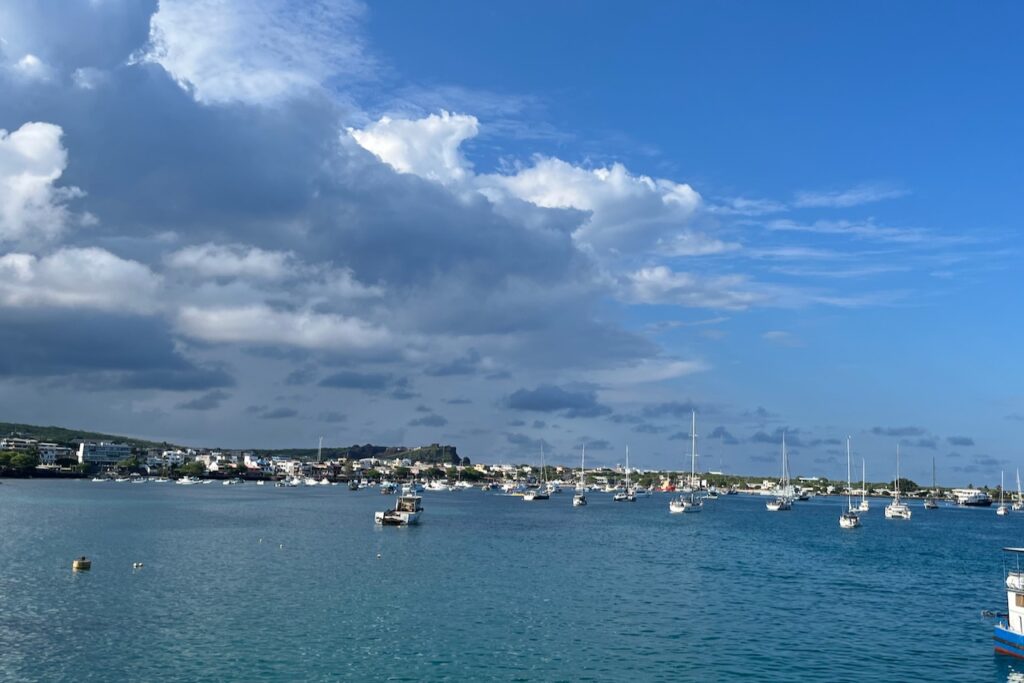
When we arrived, there were many sail boats in the harbor and we learned that around the world regatta was making its way through Galapagos. It added to the liveliness of the waterfront in the restaurants and the main promenade.
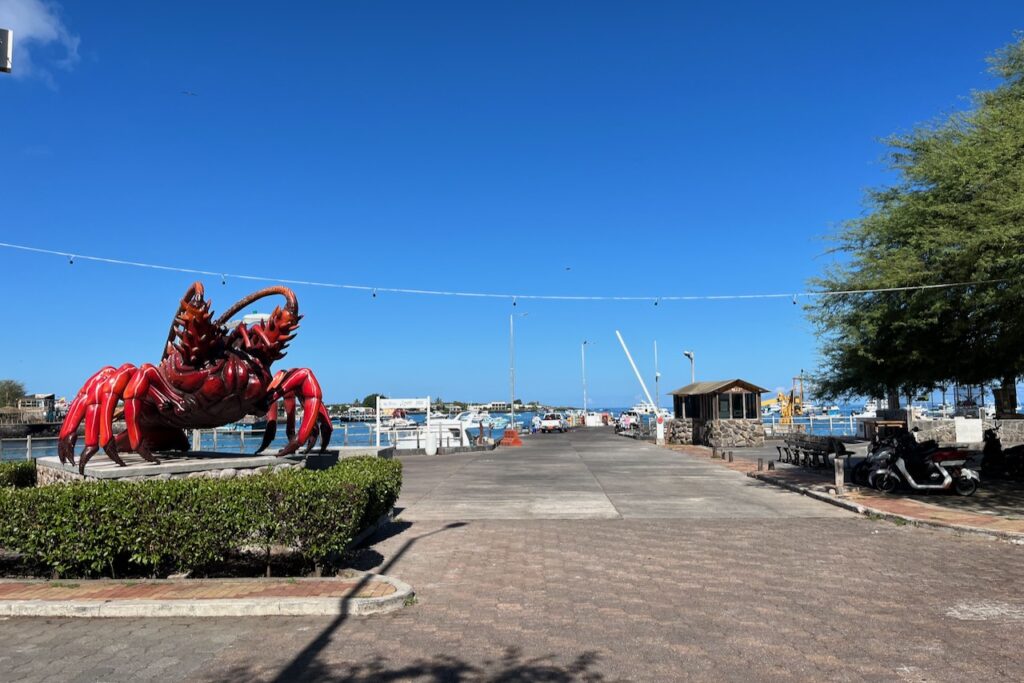
On the first day after we dropped our bags, we headed for a tour around the island. It seems any taxi can take you on a tour. In fact, we were planning to only go to La Loberia beach to watch a surfing competition that was also taking place at the time (with an international surfing competition and around the world regatta San Cristobal was making quite an impression!). But our taxi driver suggested going around to see some island spots first and we just went along with that. First we went up the hill, on a good road, to see El Junco lagoon or lake.
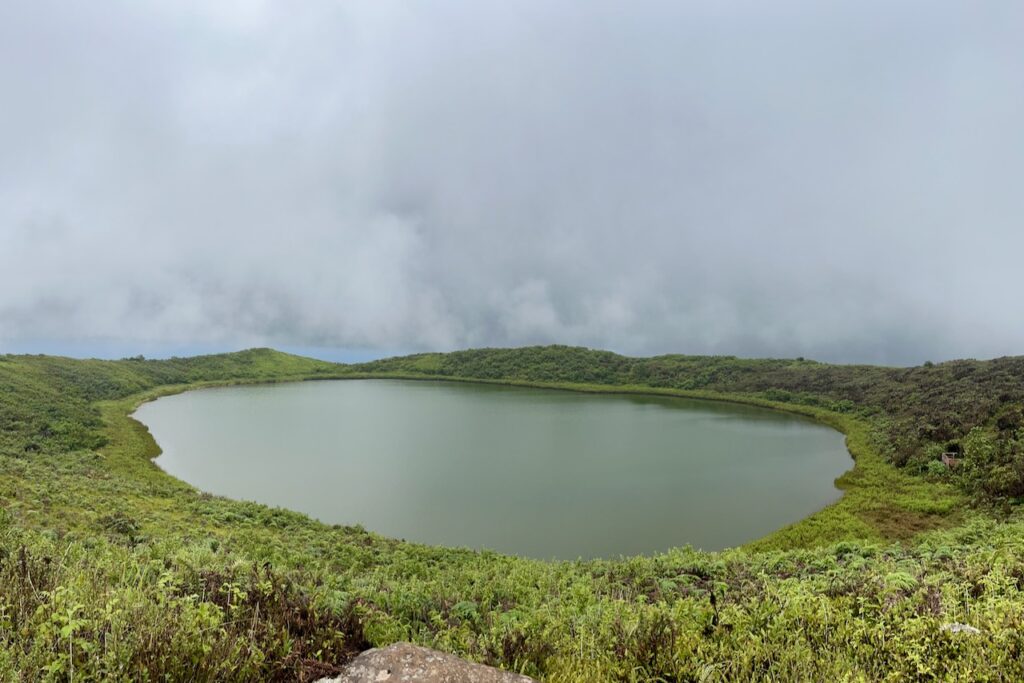
El Junco is the largest body of fresh water in Galapagos. A crater lake, it has a nice trail around its rim with excellent views all around the island. Frigate birds fly up to the lake and dive into it to wash off the salt. When we came up the clouds started coming in. We walked around to catch the views of the island just before being completely taken over by a cloud. It made for a nice cool change from much warmer sea level temperatures.
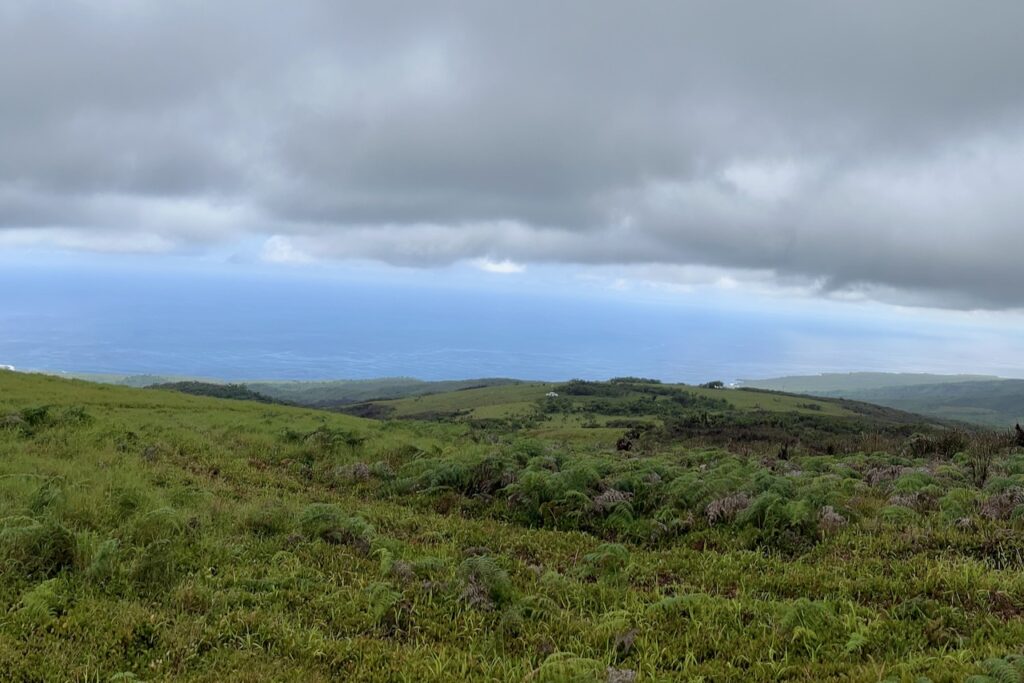
We then headed over to Puerto Chino beach, again on a very good paved road. After a short walk through mangrove forest, not more than 10 minutes, we arrived to a very pretty stretch of white sand and perfect turquoise water. We had a swim and walked around the rocks. We were there in the middle of the day and did not see too many birds on the rocks but saw a few flying and fishing. There were only a half dozen other people on the beach.
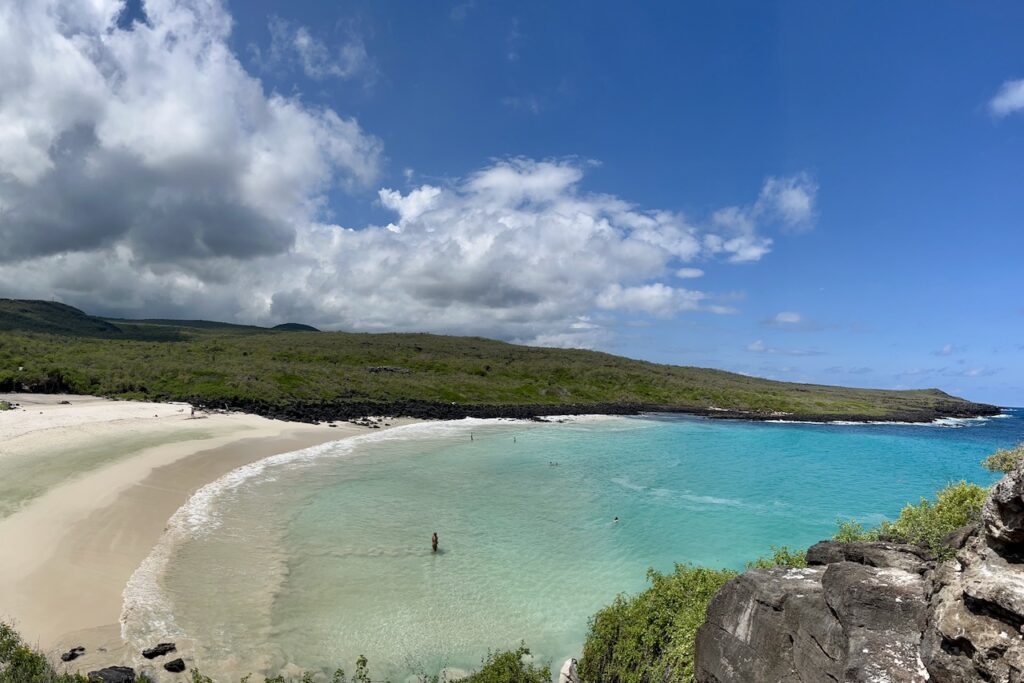
And to wrap up our tour we went to La Loberia. It is a beach close to the main town and known for its aggregation of sea lions (lobos marinos) – hence the name. By the time we arrived the surfing competition finished for the day. There were quite a few people and competition tents waiting for the next day. We had a swim and saw some turtles and sea lions. Reef creates a nice protected area, though at low tide it was a bit of a tricky passage through many rocks to get to deeper water. But nothing too complicated and there were many kids splashing away trying to find some marine life to play with. When we arrived to La Loberia, we released our driver and just walked back. It is about half hour walk downhill from La Loberia to the main town. It was a pleasant walk with sunset breeze.
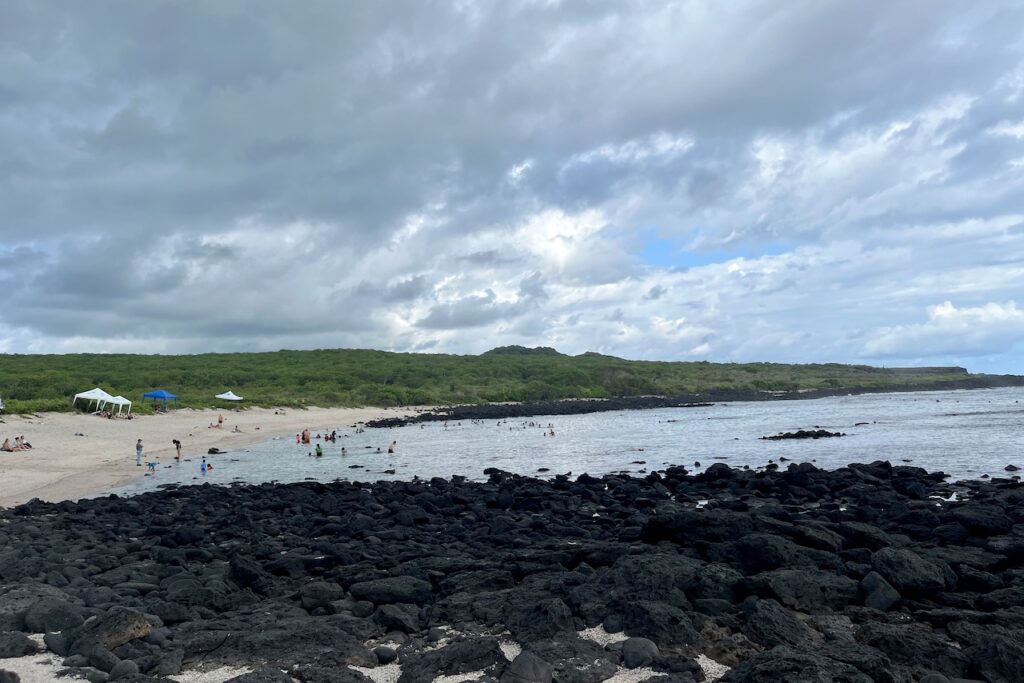
We stayed in the northern edge of town and spent a couple of days exploring the coast there. A short walk from the town is Playa Mann. It is a small white sand beach with a restaurant that gets quite busy. We saw many sea lions swimming close to shore and coming on shore all seeming to be quite used to the people. There are also many frigate birds, blue footed boobies and other birds flying and diving for fish. A nice little beach right next or actually in town.
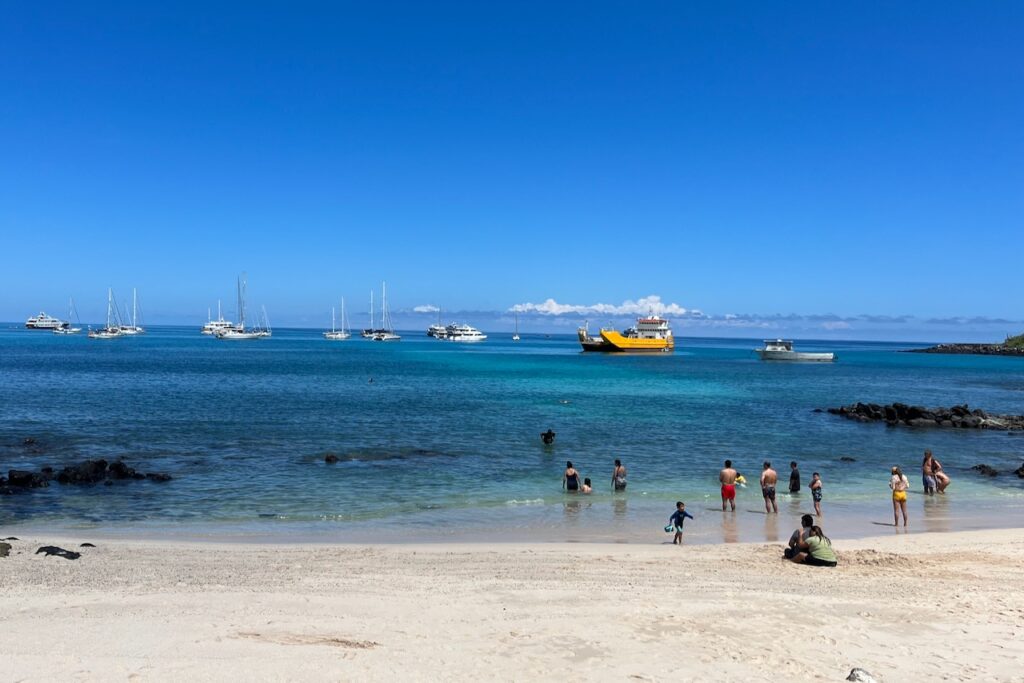
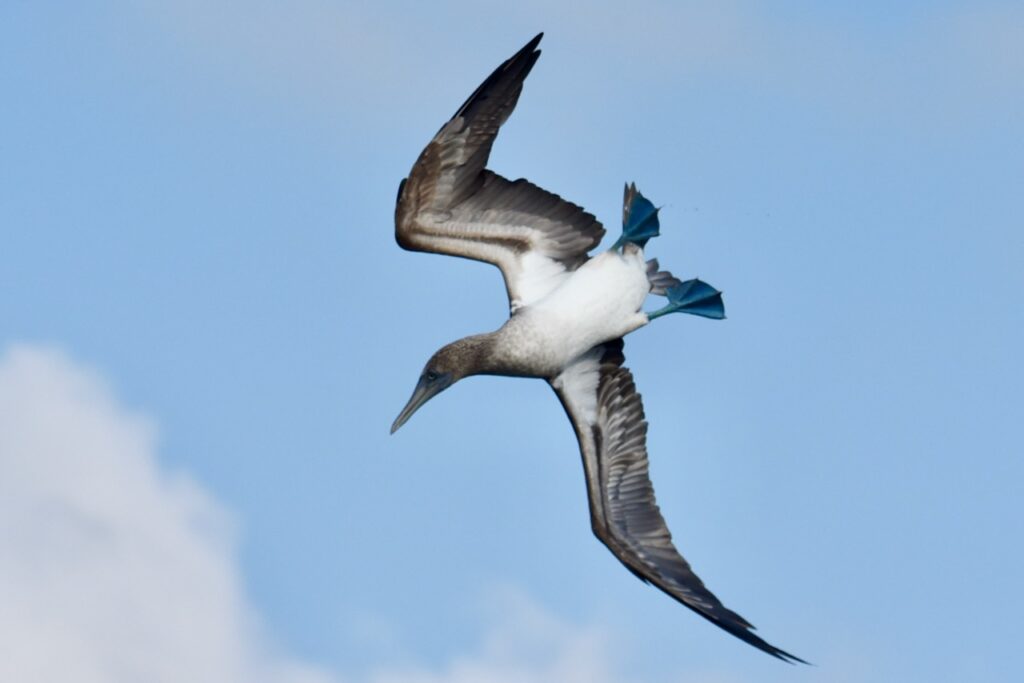
A little past Playa Mann is the Interpretation Center with a wealth of information about Galapagos nature and history. There is a walkway through the center which then continues to Playa Punta Corola and Muelle Tijeretas. The walk way is well maintained and one can walk around in flip flops easily.
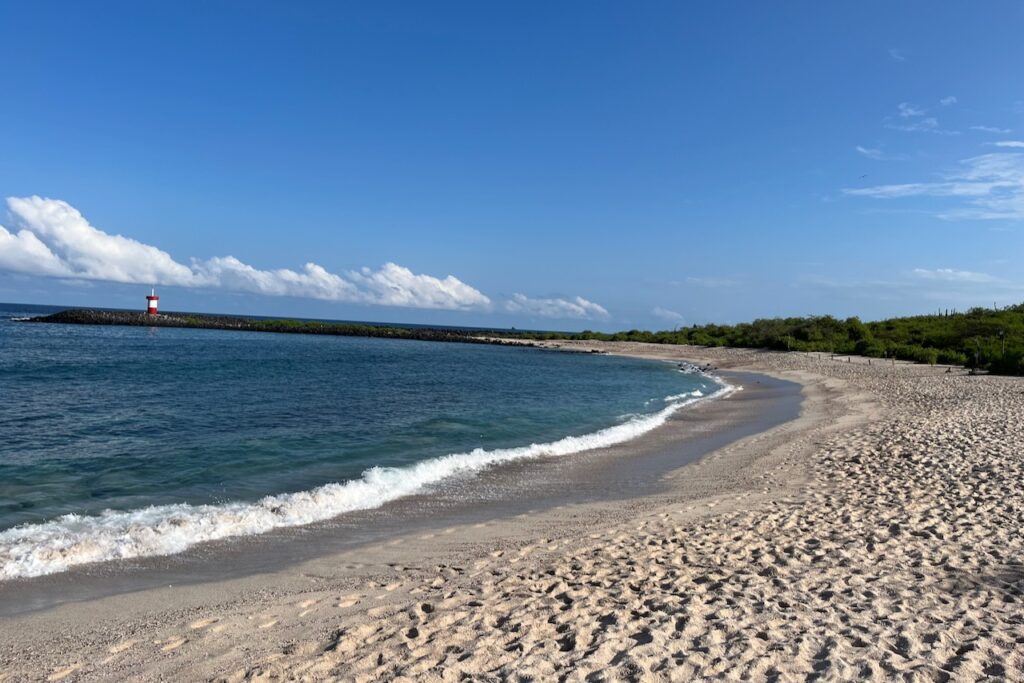
Playa Punta Corola is a nice white sand beach. There were a few sea lions swimming and coming on shore and marine iguanas. There was a bit of surf and the shoreline drops off pretty fast, but one still could get in the water for a swim. Marine iguanas here were sitting on the rocks near the water so I managed to get my iguana with splashing ocean background picture.

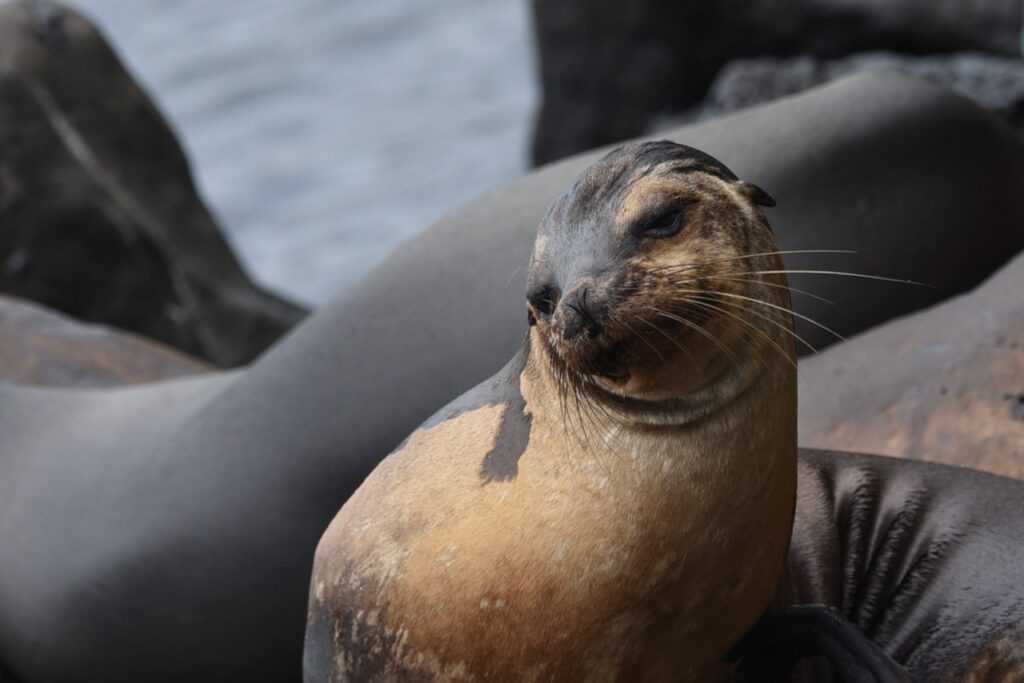
Walking further on the walkway we went to the the lookout (mirrador) Tijeretas. There are two viewing platforms up a set of stairs. Views over the Muelle Tijeretas and to the sea are fantastic. We then went down to the Darwin statue – the spot where he first came on shore in Galapagos with its own viewing platform. And then further down to snorkel at Muelle Tijeretas. There is a wooden platform and it is easy to get in the water. We snorkeled around the bay and saw turtles and very playful sea lions.
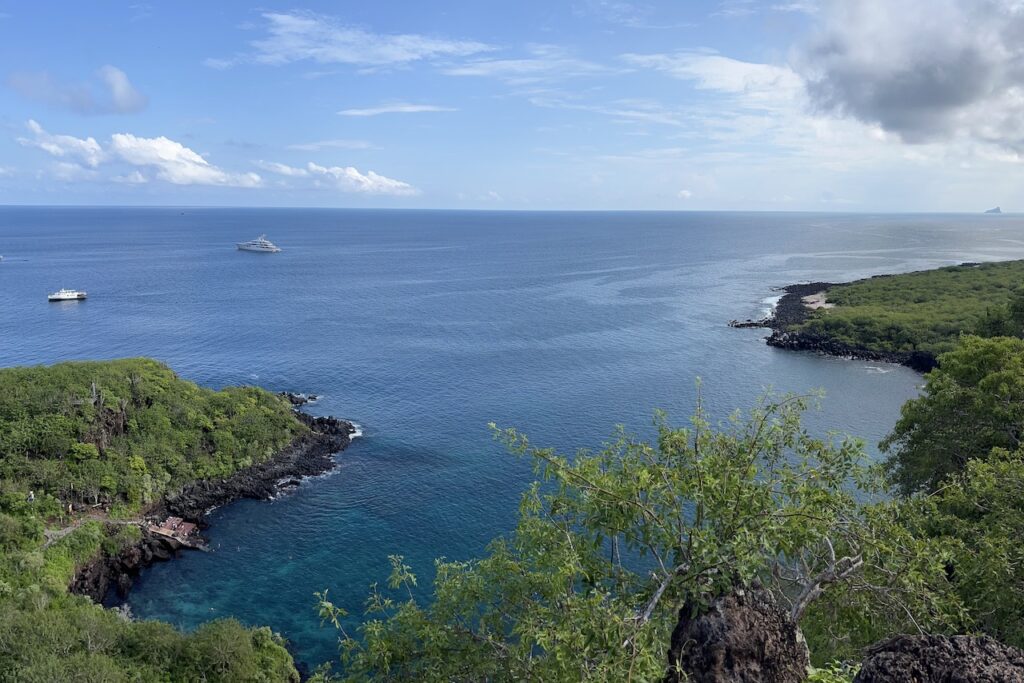
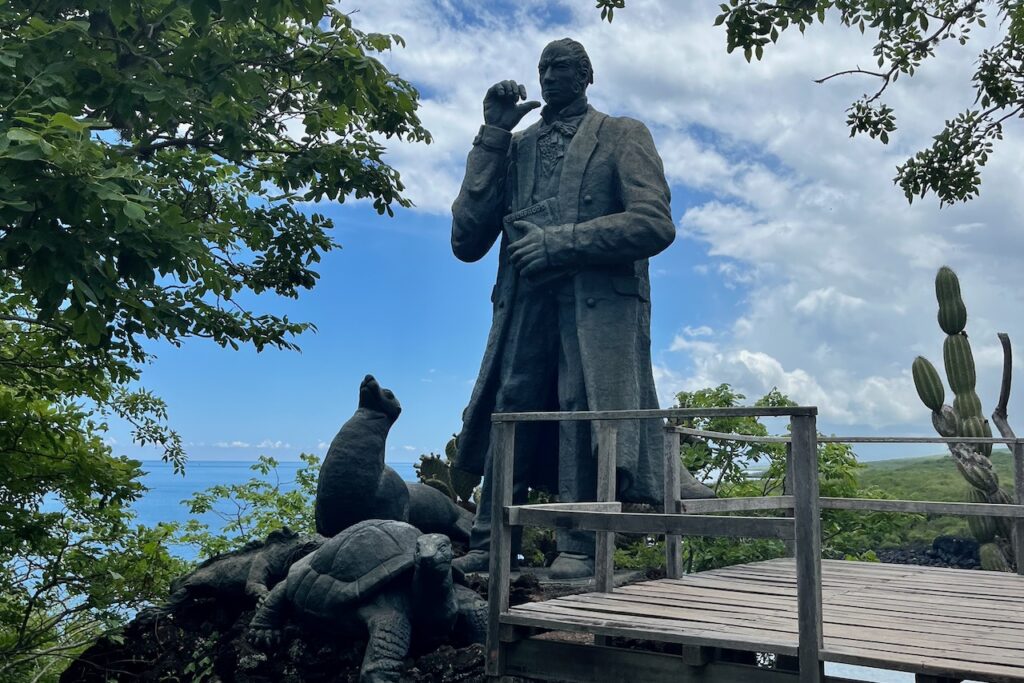
At night malecon along the water and next couple of streets are getting lively with many restaurants. There is another statue of Darwin and the ship he was on – popular for taking picture shaking hands with Darwin.
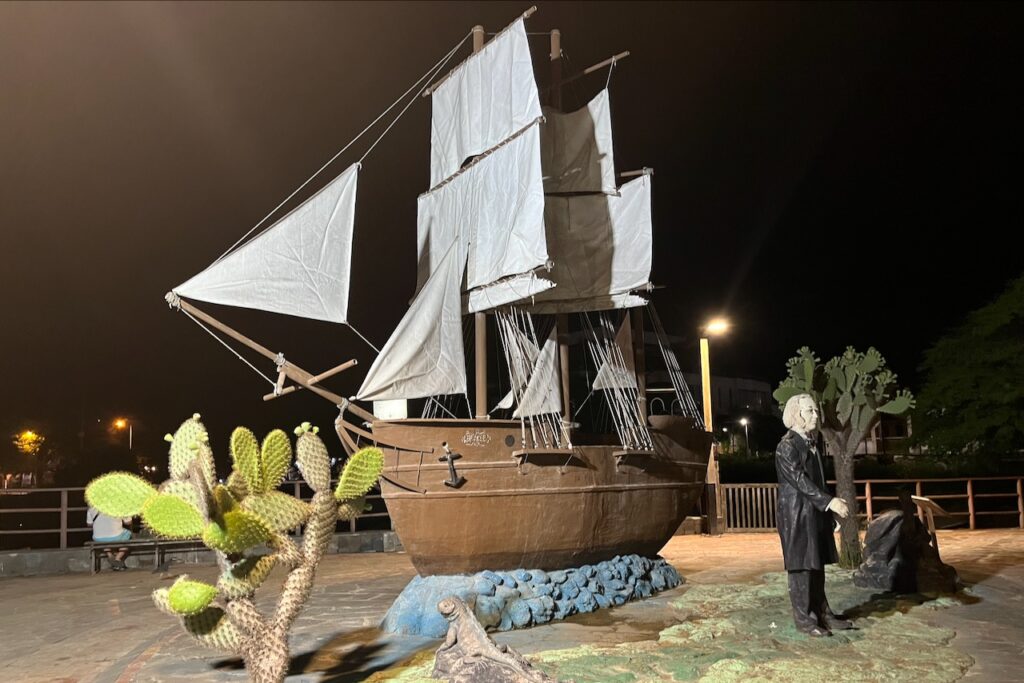
By evening time sea lions are literally everywhere. They are on the rocks around the pier, on the walkway around the pier, they clime up to benches to sleep. And the Playa de los Lobos just turns into a giant sea lion bedroom – there were hundreds if not thousands of them coming out for the night to sleep. It is quite fun to watch – they are noisy, they crawl over each other, they fight, they try to sleep and to get the best spot.
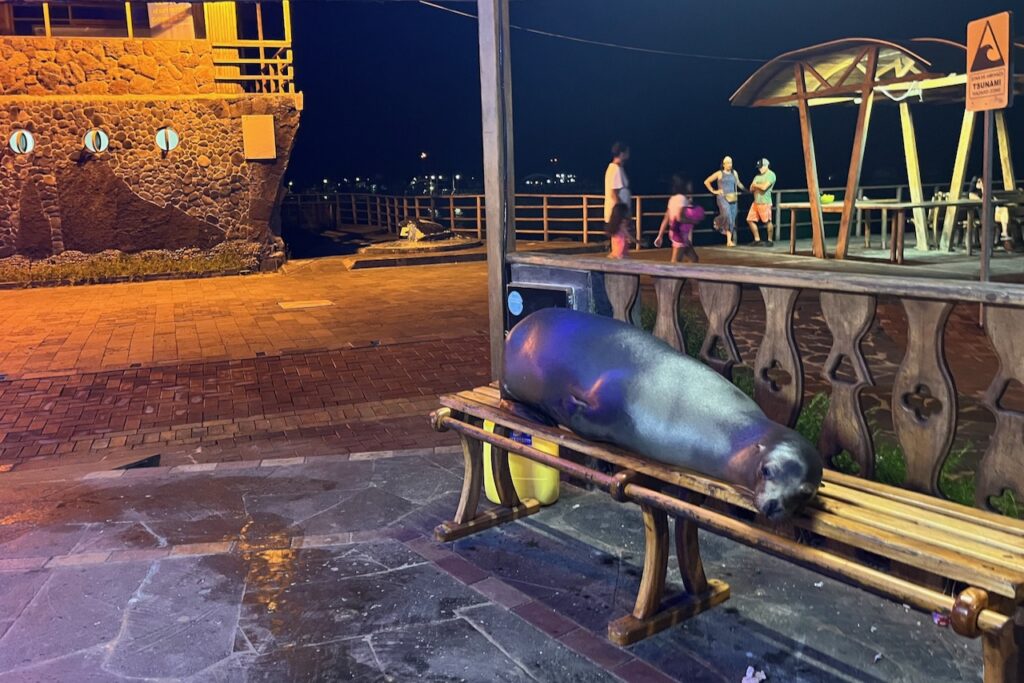

San Cristobal was a great place to spend a few days before and after our liveaboard.
